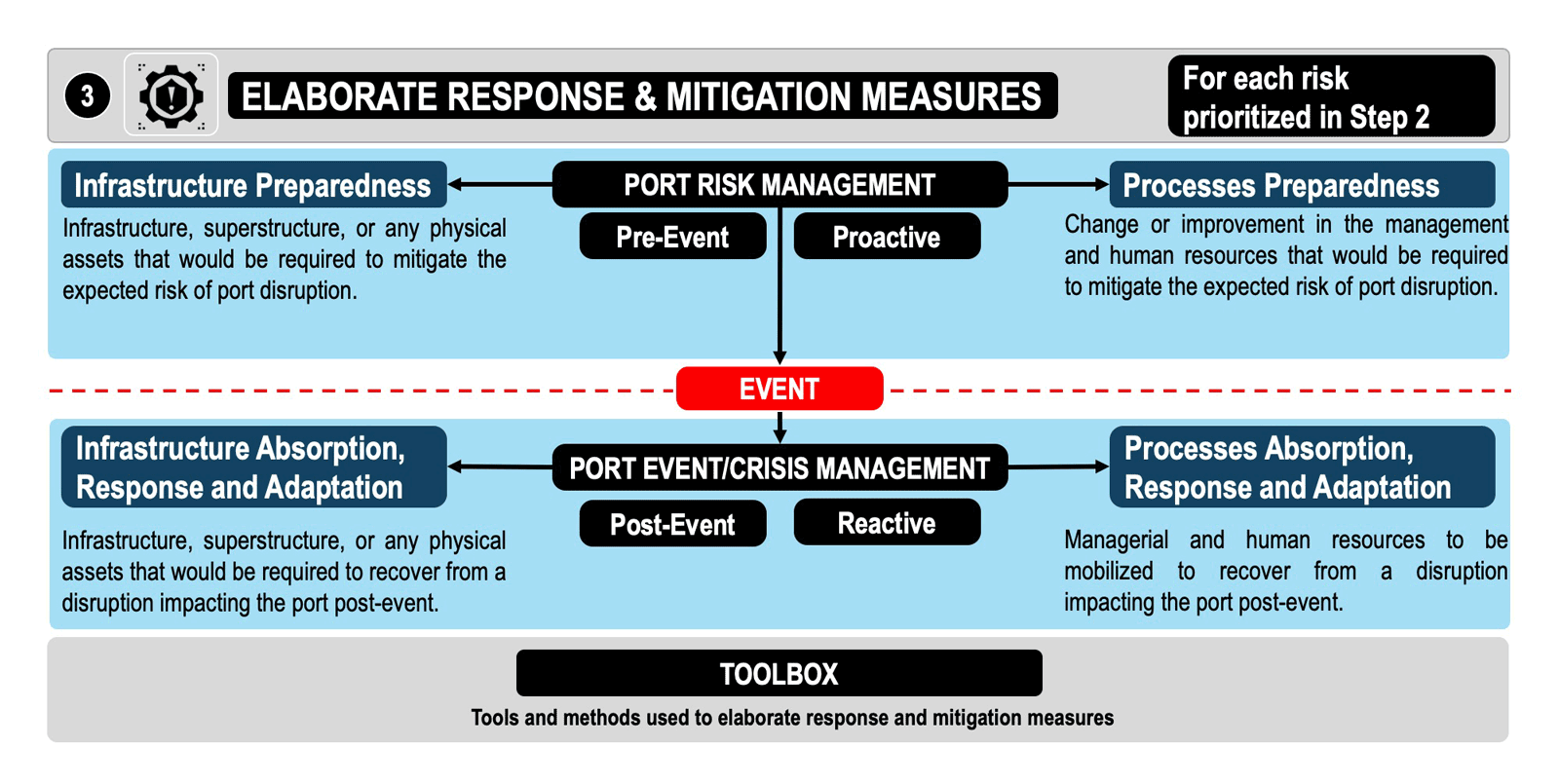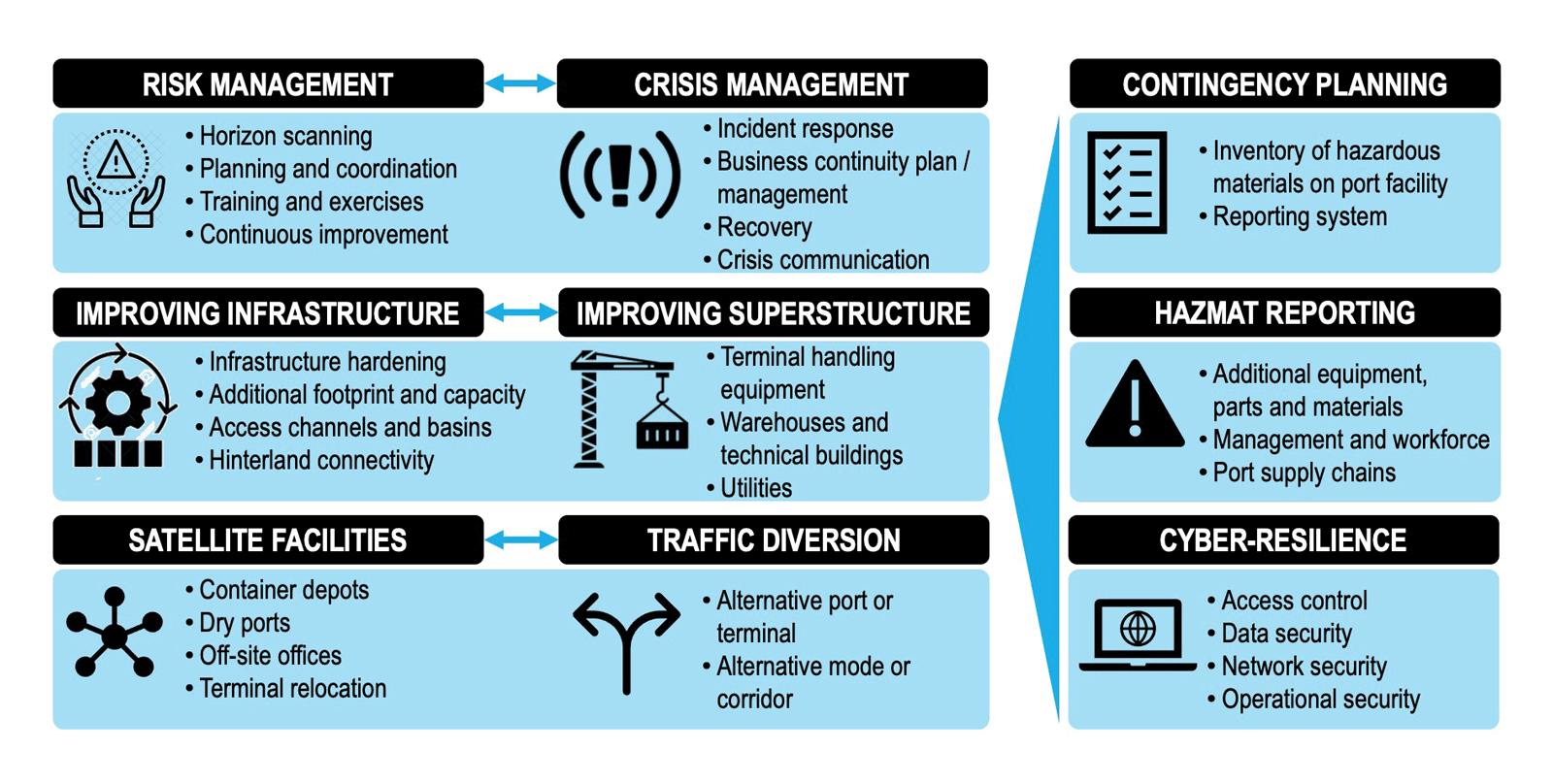Response and mitigation measures promoting preparedness and strengthen absorptive, responsive and adaptive capacities must be elaborated once risks have been identified and prioritized (Step 2); these measures must be introduced throughout a port’s infrastructure, processes and services (figure 18).
Figure 18: Step 3 – Elaboration of response and mitigation measures

Two fundamental and complementary resilience-building/risk mitigation and impact alleviation strategies can be considered: the first is a proactive strategy (involving pre-event and promoting preparedness and readiness in the face of disruptions); and the second is a reactive strategy (comprising post-event and promoting mitigation of impacts, recovery, and adaptation).
- Proactive or pre-event (preparedness and port risk management). This refers to risk management strategies that seek to identify, assess and mitigate risks, and address or mitigate risk before an event happens. It includes risk assessment, risk identification and vulnerability assessment. Physical asset or infrastructure preparedness focuses on the physical capabilities of the port, including infrastructure, superstructure, or any other physical assets that may be needed to mitigate an expected risk. Process and people preparedness focuses on a port’s managerial capabilities, including the services, management and human resources, required to mitigate an expected risk, including collaborative measures with stakeholders, such as carriers and infrastructure managers.
- Reactive or post-event (port crisis management, absorption of disruption and recovery). This refers to an event/disruption, as well as crisis mitigation strategies aimed at responding to a crisis (a risk event) immediately after it has taken place, and which seek to reduce their negative impacts. Infrastructure response and adaptation focuses on the required infrastructure, superstructure, or the physical assets necessary to absorb the disruption, restore initial conditions, or recover or bring them to a similar level, while at the same time as ensuring continuing growth. This mainly concerns repairs. Process response and adaptation focus on the required managerial and human resources to be mobilized to absorb the disruption, restore the pre-existing conditions or bring them to a similar level, recover from the disruption, and continue to grow. This mainly concerns operational adjustments, communications, collaboration and financial disbursements.
Port risk management and port event/disruption, or crisis management, can be implemented jointly or independently, depending on the risk. Adopting a proactive approach through pre-event preparedness could be judged as being too costly as some risks are unlikely to occur in some ports. In these circumstances, it may be more relevant to have a reactive approach or post-event response targeting specific risks, while concurrently maintaining the appropriate infrastructure and managerial capabilities.
An overview of the key elements forming part of a proactive (i.e. pre-event preparedness and state of readiness) and reactive (i.e. post-event response and mitigation) approaches to risk management and resilience building are presented below and featured in figure 19:
- Risk management includes the identification and assessment of potential impacts (e.g. enterprise risk management, risk registers, risk metrics).
- Crisis management (protocols).
- Improving infrastructure and Improving superstructure.
- Improving processes and operational efficiency.
- Satellite facilities.
- Traffic diversion and multi-sourcing (given third party supplier risks).
- Preparedness (pre-event, focusing on preparing infrastructure, equipment, and processes such as business continuity plans).
- Hazmat reporting.
- Cyber-resilience.
- Training, awareness-raising, and building required skills among the labour force.
Figure 19: Key mitigation and response measures to port disruptions

